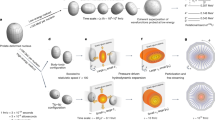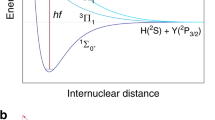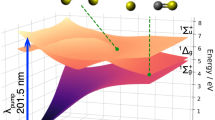Abstract
WHILE the experimental work of Rutherford demonstrates the disintegration of the nuclei of the atoms of six elements of odd atomic number to give long-range hydrogen nuclei, it does not show whether shorter-range products of disintegration are emitted. It occurred to one of the writers several years ago that the photographic method of C. T. R. Wilson would be the best means easily available of actually testing the stability of the nuclei of atoms for the different types of disintegration, particularly when the particles emitted have a short range. In the earlier applications of this method polonium has been used almost exclusively as the source of -particles. The -particles thus emitted have a relatively small kinetic energy, so the evidence obtained from the photographs is not of much value in its bearing on nuclear stability. The writers have therefore used the high - speed -particles from thorium C, with a velocity of 2.05 × 109 cm./sec., or 0.688 c.
This is a preview of subscription content, access via your institution
Access options
Subscribe to this journal
Receive 51 print issues and online access
$199.00 per year
only $3.90 per issue
Buy this article
- Purchase on SpringerLink
- Instant access to full article PDF
Prices may be subject to local taxes which are calculated during checkout
Similar content being viewed by others
Rights and permissions
About this article
Cite this article
HARKINS, W., RYAN, R. A Method of Photographing the Disintegration of Atoms and of Testing the Stability of Atoms by the Use of High-speed Alpha Particles. Nature 112, 54–55 (1923). https://doi.org/10.1038/112054a0
Issue date:
DOI: https://doi.org/10.1038/112054a0



